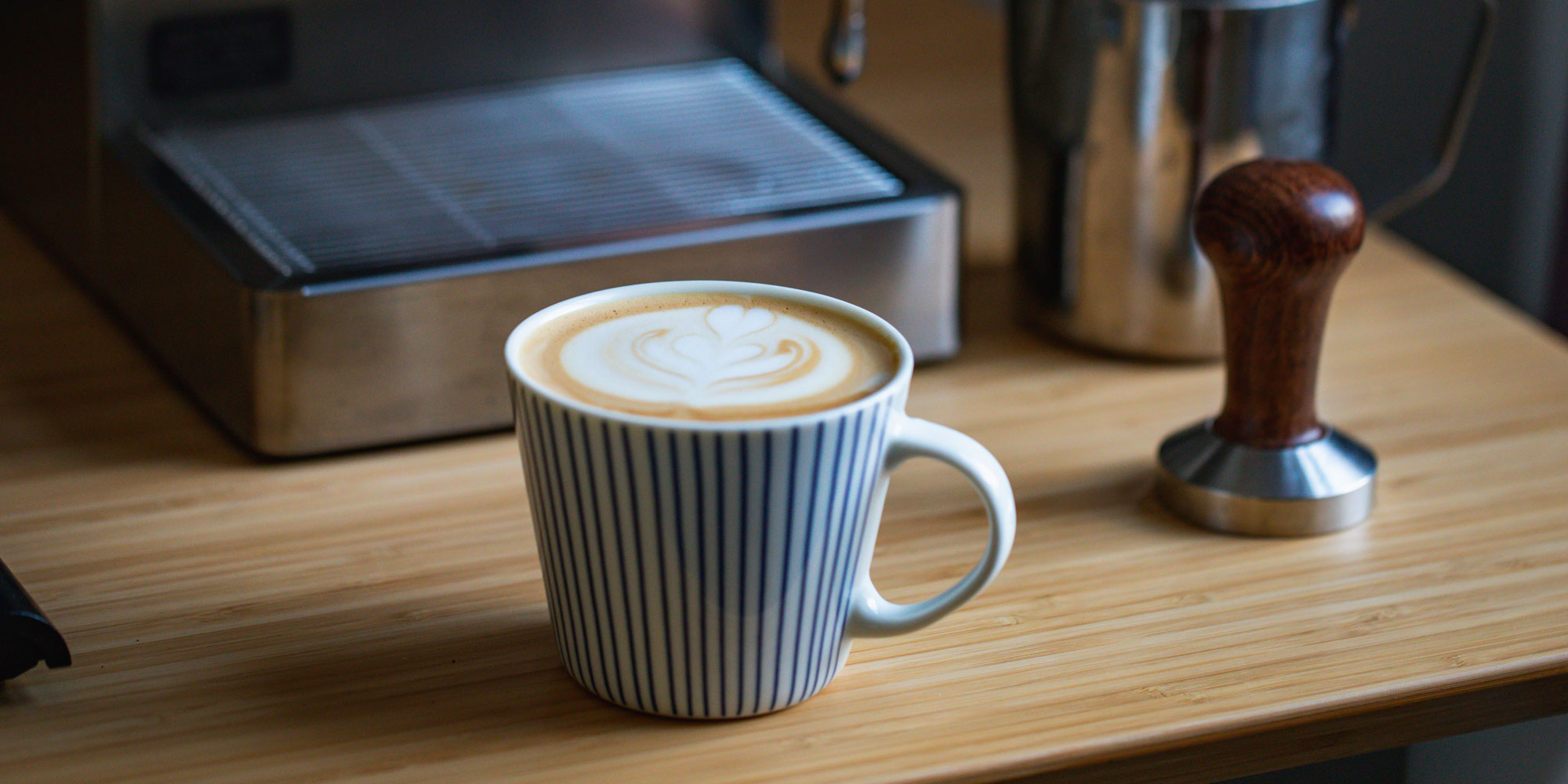By clicking a retailer link you consent to third-party cookies that track your onward journey. This enables W? to receive an affiliate commission if you make a purchase, which supports our mission to be the UK's consumer champion.
How we test coffee machines

Spending more on a coffee machine doesn't guarantee great coffee. We've tested some that cost less than £100 and make a better espresso than others costing five times as much.
We've made thousands of espressos in our quest to find the best coffee machines, uncovering some brilliant models that are quick, user-friendly and (most importantly) able to make superb espresso. But others produce lukewarm and uninspiring coffee or are needlessly complicated to use.
See our best coffee machines for help choosing between a pod, traditional espresso or bean-to-cup machine.
Video: How we test coffee machines
What are Best Buy, Great Value and Don't Buy coffee machines?

A quick guide to the recommendations you'll see on our coffee machine reviews.
Best Buy coffee machines
Best Buys typically do well in most, if not all, of our tests. They're likely to quickly produce tasty and hot espressos (and creamy cappuccinos if they're designed for that), have easy to use controls, be simple to clean and descale, not make too much noise and be energy efficient.
Our Best Buy recommendation takes into account the pros and cons of the machine types. Pod machines, for example, are usually very simple to use and this can bump up their Ease of Use scores.
To account for these differences, we have a different Best Buy cut-off point for awarding Best Buys for each type of machine, so you can easily find the best bean-to-cup, pod or traditional espresso machine – or use the percentage scores to find the best machine overall.
Bean-to-cup coffee machines that score at least 73%, traditional espresso coffee machines that score 70% or more and pod coffee machines that score at least 75% earn our Best Buy recommendation, but you should still read our reviews to check for any factors that might affect which you want to buy.
Great Value coffee machines
If you're after a coffee machine, but don't want to pay too much, our Great Value recommendation is for you. Great Value coffee machines are at least 20% cheaper than the average price of the machines we've tested (based on type) and, most importantly, score pretty well in our tests – 70% or more if they're bean-to-cup or pod machines and 60% or more if they're traditional espresso machines.
Some Great Value picks even score highly enough to be Best Buys, too.
To find a Great Value coffee machine, visit our coffee machine reviews and use the 'Great Value' filter.
Don't Buy coffee machines
Coffee machines that score 45% or less are Don’t Buys and should be avoided at all costs.
Don't Buys will literally leave a bitter taste in your mouth. From poor, lukewarm espressos that take ages to fill your cup through to laborious descaling routines and awkward controls, Don't Buy coffees are a huge letdown.
Why are there no Eco Buy coffee machines?
You may have seen our Eco Buy recommendations for other types of product, and wondered why we haven't any for coffee machines. It's partly because we're yet to see a huge amount of separation in energy efficiency between coffee machines.
But it's also to do with the fact that the greatest environmental impact along the chain from coffee bean to cup comes from the production of the coffee itself.
If you're looking to reduce the environmental impact of your coffee habit, choosing coffee that's fairly and sustainably produced is the way to go. If you're using capsules, make sure they're recyclable or compostable.
Find out more about Which? Don't Buy coffee machines.
How is the Which? score calculated?

The Which? overall score is a percentage. It takes into account only the results of our tests and ignores price.
This means all coffee machines are tested on exactly the same scale, so you can compare any model at any price and know how it measures up against its rivals in key areas. All coffee machines are tested in the same way, regardless of any manufacturer claims.
Weightings and star ratings
A Which? test score is made up of dozens of individual tests and checks, from key factors such as the taste of the coffee and dispensing speed, to ease of use, quietness and energy efficiency.
To keep things simple, the most important scores are shown as star ratings out of five on each coffee machine’s Test Results tab as an easy-to-compare list of strengths and weaknesses, so you can quickly work out whether a machine is right for you.
The most important test results have a greater impact on a coffee machine’s score:
- 40% quality of espresso
- 25% ease of use
- 10% energy efficiency
- 10% quietness
- 10% quality of cappuccino
- 5% personalisation
Head straight to our coffee machine reviews to discover the models we recommend – or read on to find out more about our testing.
Our testing criteria

These are our key coffee machine testing criteria and how we evaluate each.
Quality of espresso
Key question: How well does the coffee machine make an espresso?
Our coffee tasting panel blind taste espresso coffee from each coffee machine. Their expertise means they can tell the difference between coffees made by different models using the same coffee.
Taste is a big part of the test, but we also assess appearance and aroma.
Key question: Does it make coffee at the right temperature?
We test the temperature of each espresso by inserting a digital thermometer into the centre of each cup.
We look for an average temperature no cooler than 60°C and no hotter than 88°C. This is the ideal range for espresso coffee.
Key question: Is it quick to make coffees?
A good machine will take up to 30 seconds to make a standard 30ml espresso and stop dripping. Poor machines can take more than 30 seconds to make your espresso, and a further 30 seconds or more before they stop dripping completely.
We time how long you have to wait for a standard 30ml espresso, including the time the machine takes to heat up, and how long it continues to drip for afterwards so you won't have to hang about getting your morning coffee or clearing up the mess.
Key question: Does it churn out consistent coffees?
For machines that can produce two cups of espresso simultaneously, we record the temperature and amount of coffee in each cup to make sure it’s even – so there’s no bickering over who gets the biggest brew first thing in the morning.
Quality of espresso test results make up 40% of a machine's score.
Ease of use
Key question: How easy is it to set up, clean and use the coffee machine?
Some machines are a cinch to use, while others are unnecessarily complicated. We rate each for ease of use to ensure you don't end up with a product you throw to the back of your kitchen cupboard.
We check how simple the instructions are to understand and follow, and how easy it is to prepare and set up the machine.
We also look at how straightforward it is to clean and descale the machine.
Ease of use makes up 25% of a coffee machine's score.
Energy efficiency
Key question: Is the coffee machine energy efficient?
We measure the amount of energy the machine uses to heat up and make coffee. We also check how much energy it uses in standby mode.
Energy efficiency makes up 10% of a machine's score.
Quietness
Key question: Is the coffee machine annoyingly noisy?
All coffee machines are a little noisy when running, but some are far louder than others. That's why we use a panel of three experts to test how noisy each is when preparing an espresso.
We also rate how intrusive and annoying the sound is.
This subjective assessment is paired with an objective measurement of the decibel level. A very quiet model will earn itself five stars, while a very noisy machine will only pick up one.
Quietness makes up 10% of a coffee machine's score.
Quality of cappuccino
Key question: How good does a cappuccino made by the coffee machine taste?
For machines capable of making milk drinks, our panel of experts rate the taste of its cappuccino.
Key question: How well does it froth milk?
If a machine can froth milk – whether via a steam pipe, automatic milk frother or milk pod – we test how well it works. It doesn't matter whether your favourite is a cappuccino, flat white or any of the latest fads – our milk froth rating will tell you how good the froth is and how well it blends with the coffee.
We time how long it takes for the milk to be frothed and record the temperature and amount of froth.
Key question: How easy is it to use and clean the milk frother?
Creating your own micro foam for milky coffees can be difficult, but it's easier with some machines than others.
We assess how easy it is to use the steam pipe (or other frothing system) We also rate how simple it is to clean the milk frother and milk container.
Quality of cappuccino makes up 10% of a coffee machine's score
Personalisation
Key question: Can you adjust the settings to produce drinks that suit your preferences?
Not everyone likes their coffee the same way, so we check if there are options for customisation and how easy they are to make use of. We look at adjusting the grind setting, coffee temperature, coffee strength and the volume of the drink.
Machines that score well here will have a range of customisable options, while you'll have to take what you're given from the machines scoring just one or two stars.
Personalisation makes up 5% of a machine's score.
Read our guide on how to clean your coffee machine.
Pick the perfect coffee machine with Which?

We constantly improve our tests to ensure only the very best are Best Buys. The most recent update to our test programme was in April 2023. This means newer machines have been tested and rated in a slightly different way to older ones, so results of older and newer tested models aren't directly comparable.
Our Best Buy recommendation is reserved for coffee machines tested to our newest test programme, so we're currently in the process of retesting all of our old Best Buys. Until that's completed, you'll see some high scoring older models without a Best Buy badge sitting above our newly tested Best Buys.
You can see when each coffee machine was tested under the ‘Specifications’ tab in each review.
If you aren't sure what type of coffee machine would suit you, go to our coffee machine reviews.